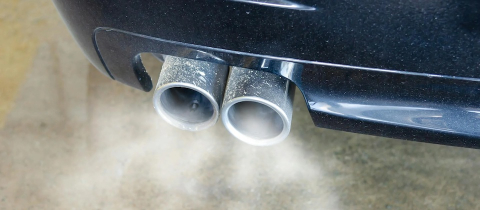Just about any scientific issue is more complicated than it first seems. And so it is with incineration of waste. A "yes" or "no" answer cannot be given to the question of whether or not incineration is the best way to treat municipal or industrial waste. There are many many variables! It depends on what sort of incinerator, what sort of garbage, how much garbage, where the incinerator is to be located and what landfill opportunities are available. There are always pro and con arguments but it is important to realize that just because both pro and con arguments can be made, they are not necessarily of equal value. For example, the Greenpeace website dismisses incineration with a puerile argument that incineration is not a solution to the world’s waste problems, but part of the problem. Incinerators may reduce the volume of solid waste, but they do not dispose of the toxic substances contained in the waste. They create the largest source of dioxins, which is one of the most toxic chemicals known to science. This is simple-minded , one-sided...and out of date. Modern incinerators release essentially no furans or dioxins, flue gases are effectively scrubbed and both fly ash and bottom ash are treated to minimize toxicity. Of course, it is impossible to have zero release and some particulate matter and some toxic gases do escape, but there are similar risks with any form of garbage disposal. Landfills can also leak.
As technology improves, incinerators are more and more capable of addressing the release problems. Comparing state-of-the-art incinerators to those that were built as recently as a decade ago is like comparing a modern car to a model-T. And of course incinerators are also a source of energy-the combustion process can deliver significant amounts of steam which can be used to generate electricity. The carbon dioxide produced does escape into the air, but is actually a less problematic greenhouse gas than methane produced by biodegradation in landfills. In a properly constructed landfill, however, the methane can be captured and burned to produce energy. Landfills can actually be a very effective way of waste disposal. The argument that "we are running out of landfill space" is not correct. Canada has plenty of space available for landfill....but not necessarily in our back yard. But so what? Garbage can be trucked, after all what becomes garbage has usually been transported from far away. Sure, one has to take into account the energy expenditure of transport and the pollution involved, but in some cases landfill may be a better option than incineration. These issues have to be examined on a case by case basis and decisions should be made on expert opinion, not on emotional outbursts. No matter what, there is no such thing as a zero waste society. That is just unrealistic blather. We can certainly cut down on the amount of garbage by recycling and composting. But even recycling raises issues. Here too it depends on what and where. In some case recycling paper may be very profitable, in others not at all. Some plastics can be recycled economically, others not. The issues are complicated and with clever language and selective use of the literature can be spun in diverse directions. The bottom line in all of this is that there is no free lunch. It comes down to a risk-benefit analysis, but that analysis may yield different results in different municipalities depending on local variables. The only legitimate conclusion is that there is no conclusion.







